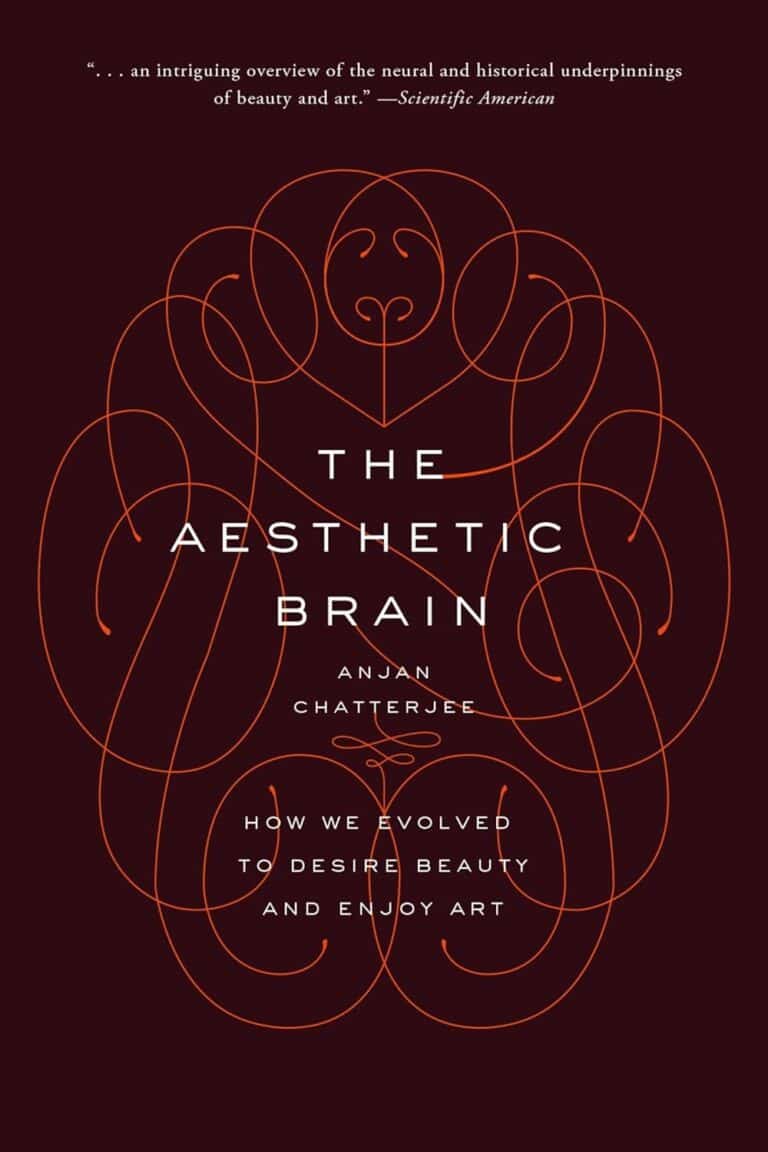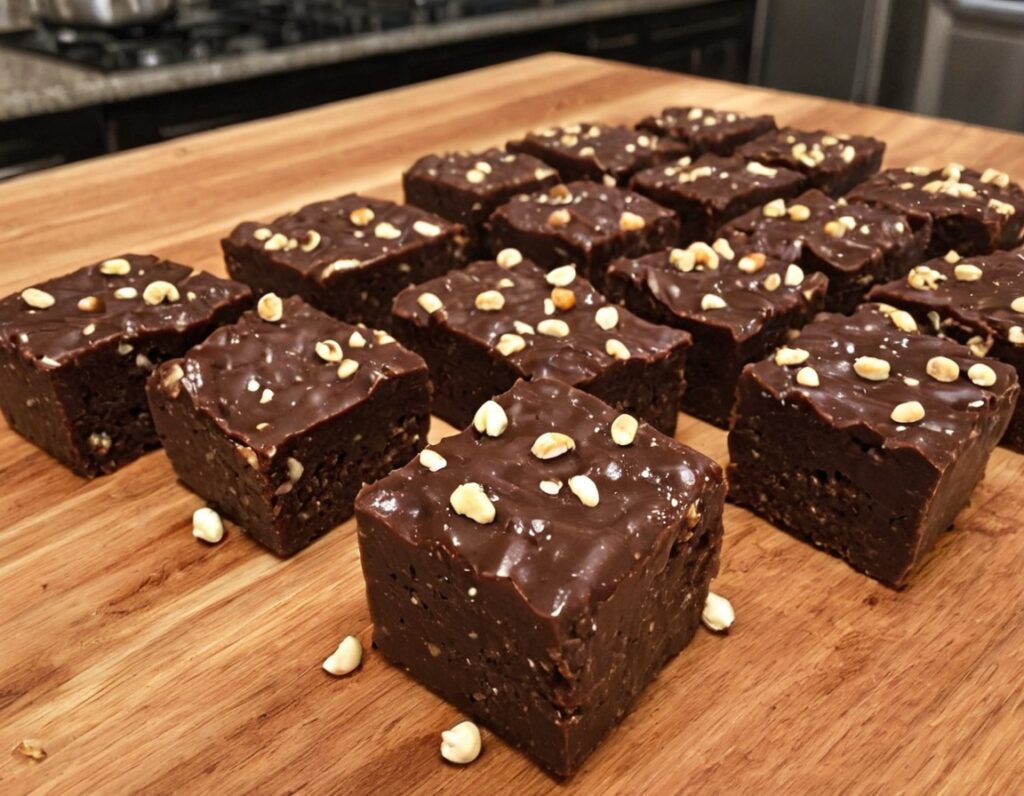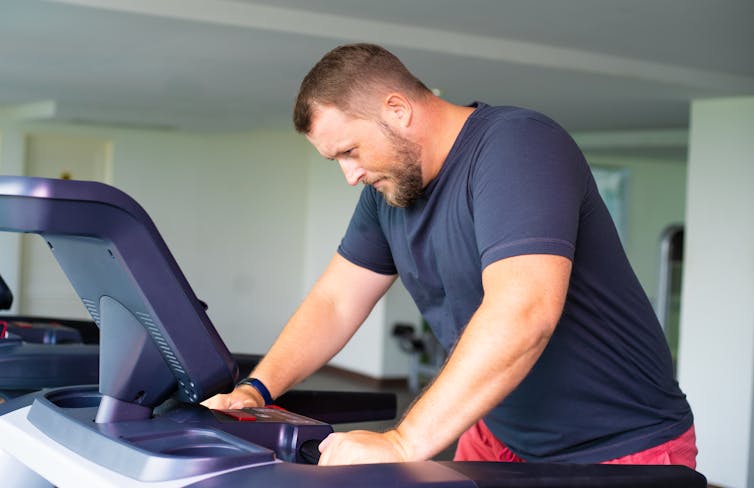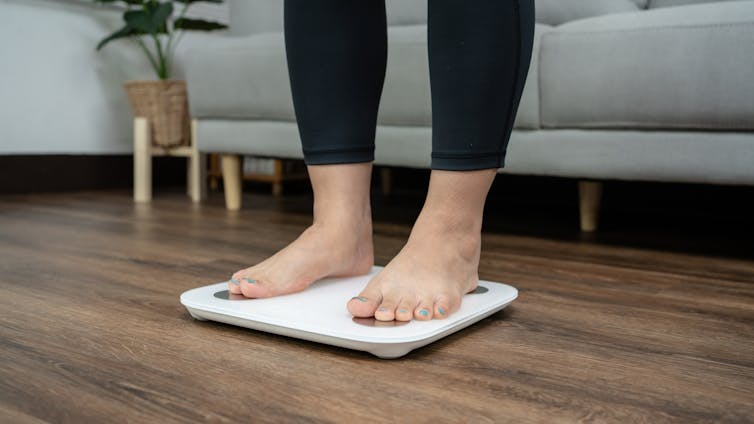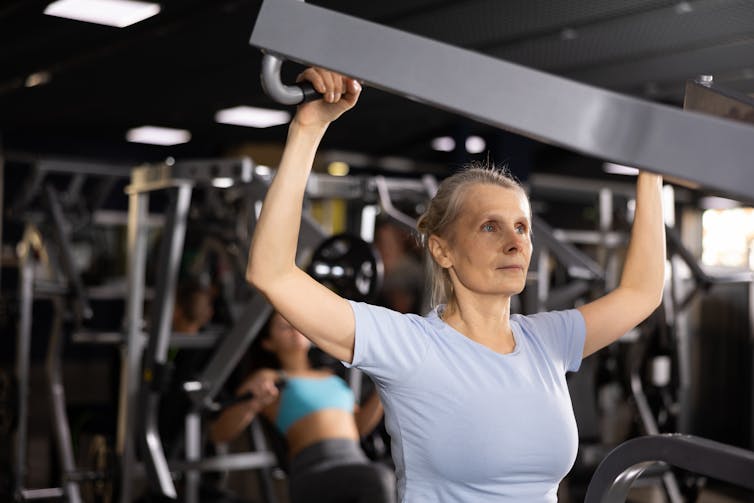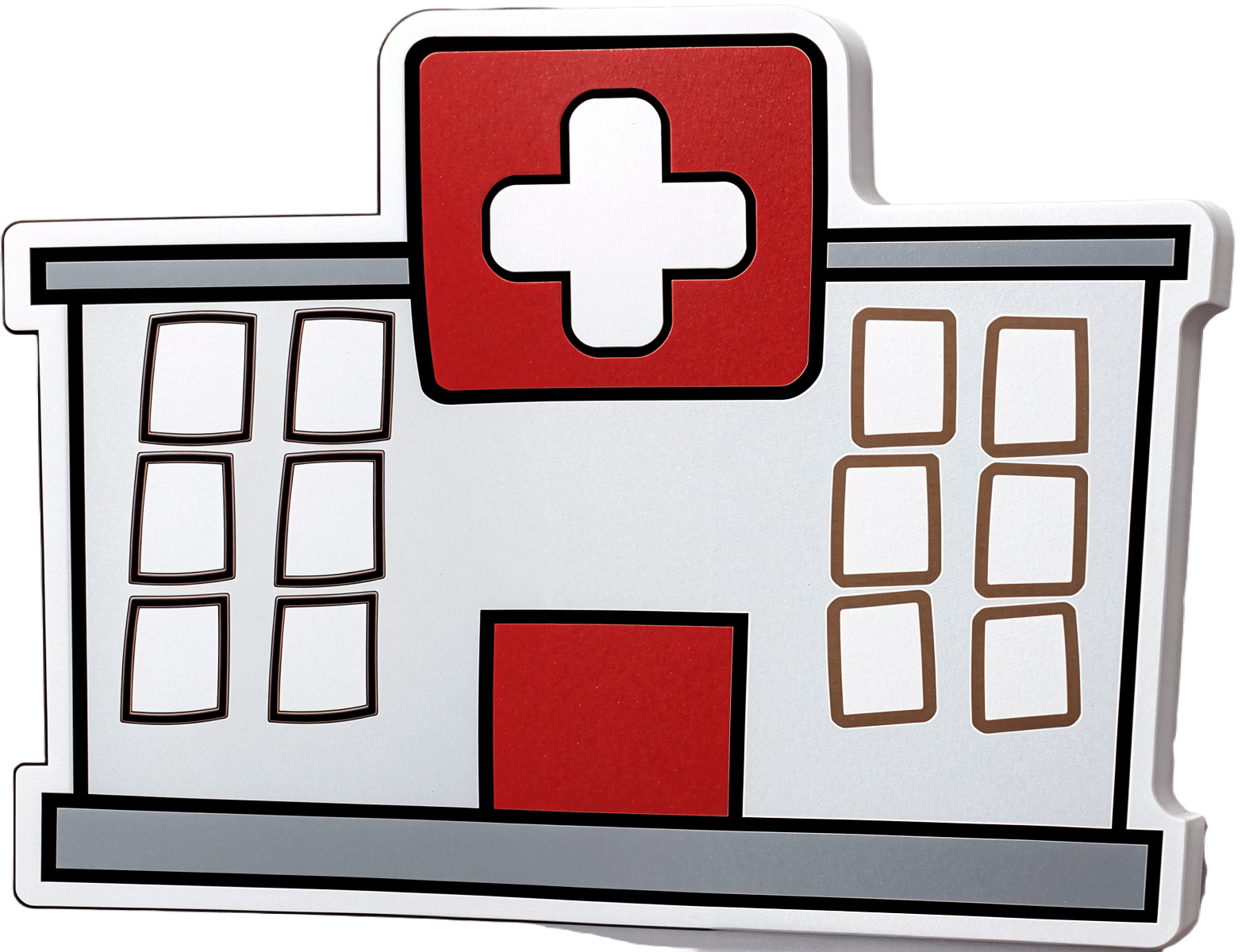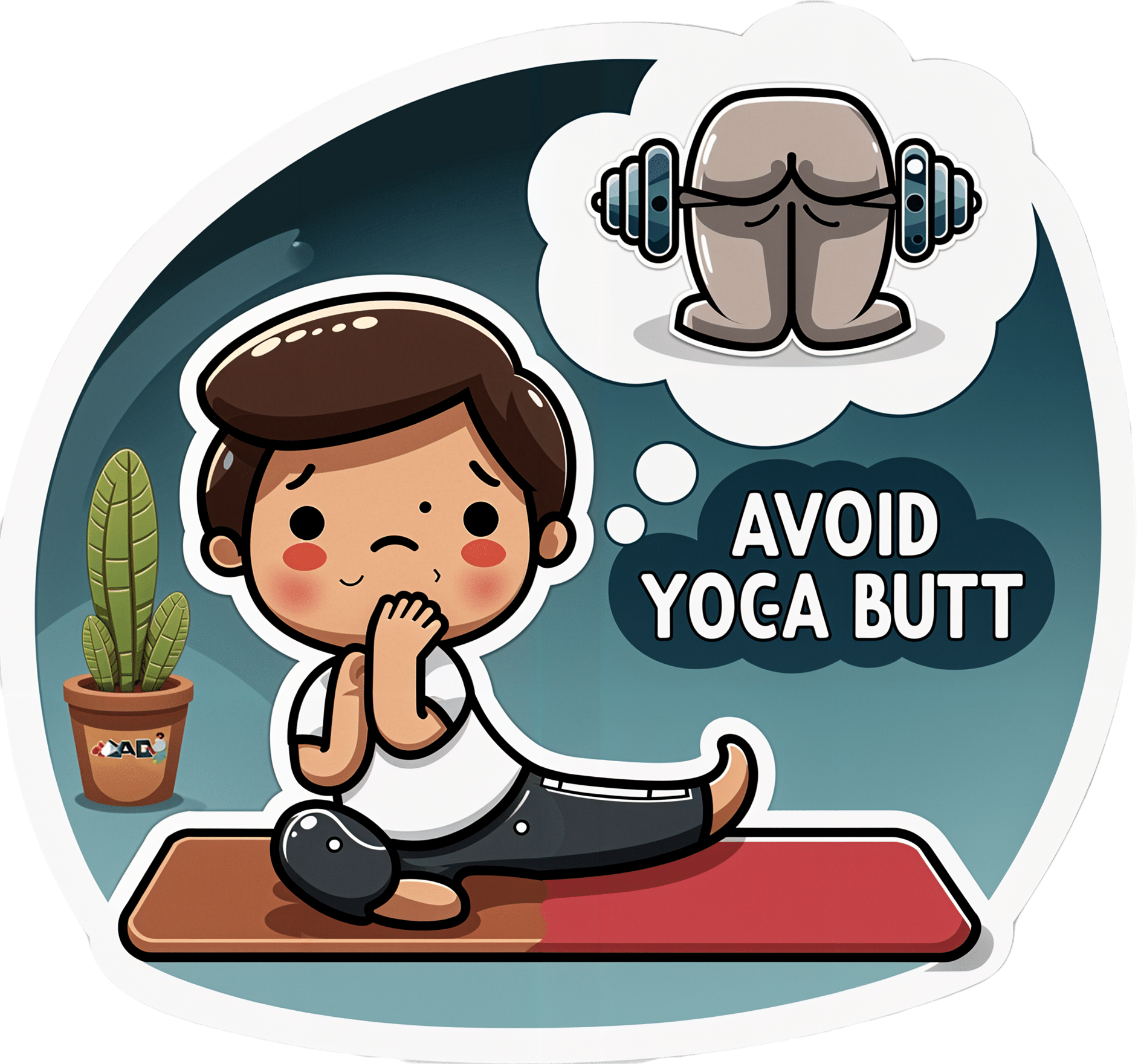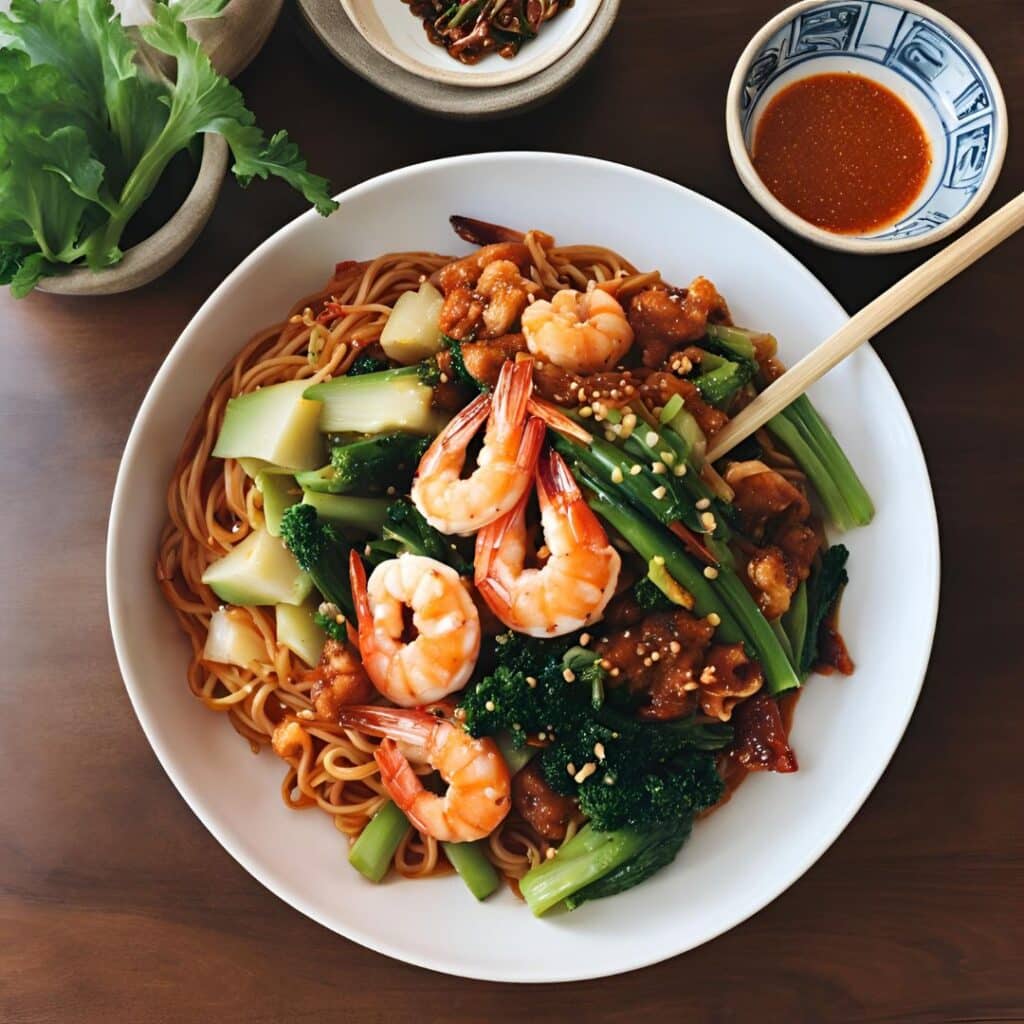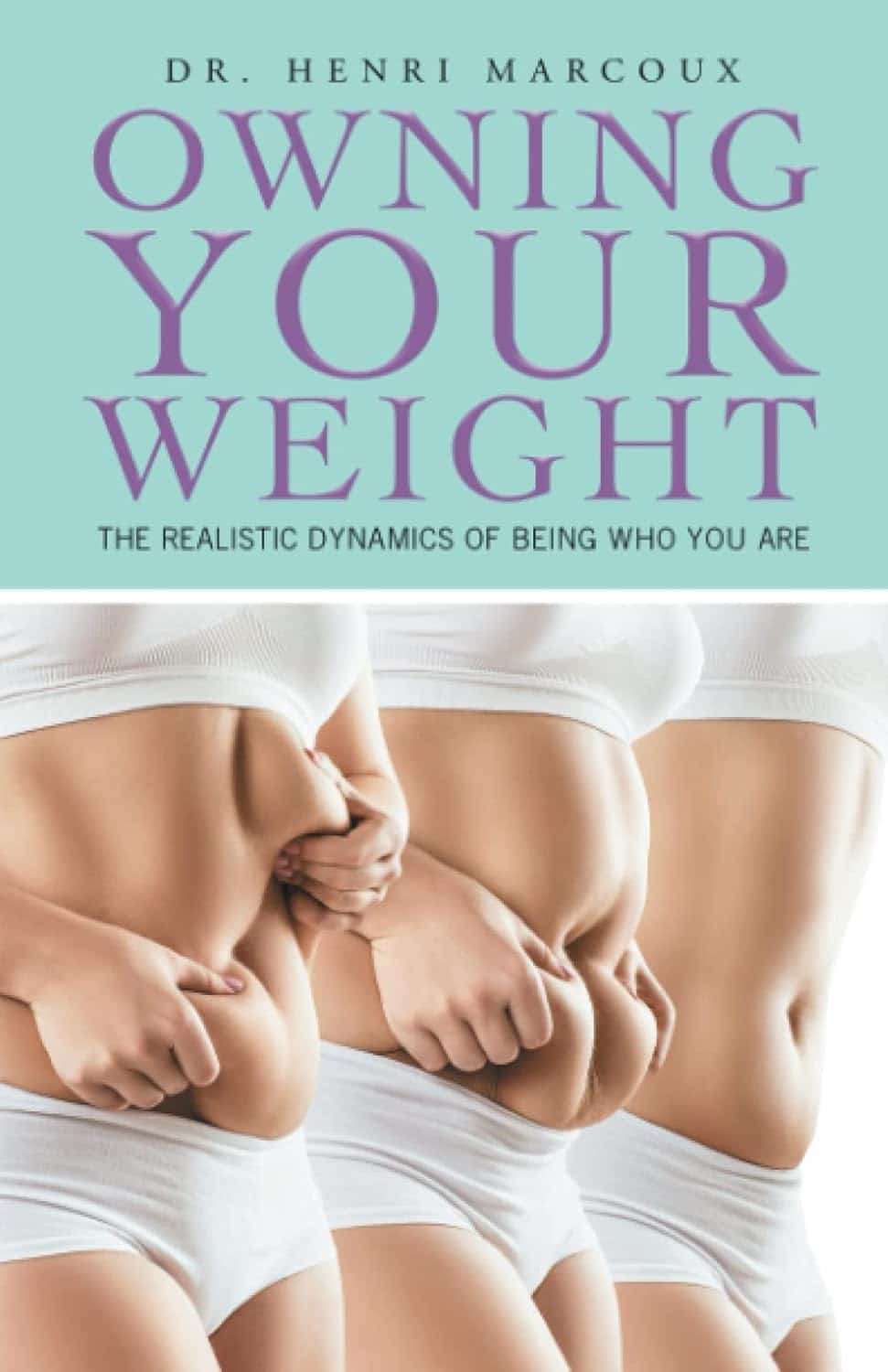
Owning Your Weight – by Henri Marcoux
10almonds is reader-supported. We may, at no cost to you, receive a portion of sales if you purchase a product through a link in this article.
A lot of diet books—which this isn’t—presuppose that the reader wants to lose weight, and varyingly encourage and shame the reader into trying to do so.
Dr. Henri Marcoux takes a completely different approach.
He starts by assuming we are—whether consciously or not—the weight we want to be, and looks at the various physical and psychological factors that influence us to such. Ranging from food poverty to eating our feelings to social factors and more, he bids us examine our relationship with food and eating—not just in the sense of mindful eating, but from multiple scientific angles too.
From this, Dr. Marcoux gives us questions and suggestions to ensure that our relationship with food and eating is what we want it to be, for us.
Much of the latter part of the book covers not just how to go about the requisite lifestyle changes… But also how to implement things in a way that sticks, and is a genuine pleasure to implement. If this sounds over-the-top, the truth is that it’s just because it honestly is a lower-stress way of living.
Bottom line: if you want to gain or lose weight, there’s a good chance this book will help you. If you want to be happier and healthier at the weight you are, there’s a good chance this book will help you with that, too.
Click here to check out Owning Your Weight, and take control of yours!
Don’t Forget…
Did you arrive here from our newsletter? Don’t forget to return to the email to continue learning!
Recommended
Learn to Age Gracefully
Join the 98k+ American women taking control of their health & aging with our 100% free (and fun!) daily emails:

Healthy Chocolate Fudge Energy Bites
10almonds is reader-supported. We may, at no cost to you, receive a portion of sales if you purchase a product through a link in this article.
While these are quite high-calorie, they’re also high in protein, and the fiber and healthy fats flatten the blood sugar curve:
You will need
- 1 cup peanut butter
- 4 oz dark chocolate, melted (try to get dark chocolate with >80% cocoa, if you can; 85% is very respectable and 90% is perfect)
- ⅓ cup maple syrup (you can safely reduce this, or even omit it, if you prefer less sweetness)
- ¼ cup hazelnuts
- ¼ cup almond milk (or your preferred milk, but we recommend almond for taste and health)
- 1 tsp vanilla extract
- Topping: ¼ cup hazelnuts, roughly chopped
Method
(we suggest you read everything at least once before doing anything)
1) Combine all the ingredients (except the topping) in a food processor, and blend until smooth.
2) Line a container (5″x7″ is a good size) with baking paper and spread the mixture evenly into it, pressing down gently.
3) Sprinkle the topping onto it, press that even more gently into it.
4) Refrigerate overnight (or chill it for 2hrs in the freezer).
5) Cut into cubes to serve; they can be served frozen or thawed, per your preference:

Enjoy!
Want to learn more?
For those interested in some of the science of what we have going on today:
- Eating For Energy (In Ways That Actually Work)
- “Let Them Eat Cake”, She Said…
- Why You Should Diversify Your Nuts!
- Plant-Based Milks—What’s Best?
- Chocolate & Health: Fact or Fiction?
Take care!
Share This Post

3 signs your diet is causing too much muscle loss – and what to do about it
10almonds is reader-supported. We may, at no cost to you, receive a portion of sales if you purchase a product through a link in this article.
When trying to lose weight, it’s natural to want to see quick results. So when the number on the scales drops rapidly, it seems like we’re on the right track.
But as with many things related to weight loss, there’s a flip side: rapid weight loss can result in a significant loss of muscle mass, as well as fat.
So how you can tell if you’re losing too much muscle and what can you do to prevent it?

EvMedvedeva/Shutterstock Why does muscle mass matter?
Muscle is an important factor in determining our metabolic rate: how much energy we burn at rest. This is determined by how much muscle and fat we have. Muscle is more metabolically active than fat, meaning it burns more calories.
When we diet to lose weight, we create a calorie deficit, where our bodies don’t get enough energy from the food we eat to meet our energy needs. Our bodies start breaking down our fat and muscle tissue for fuel.
A decrease in calorie-burning muscle mass slows our metabolism. This quickly slows the rate at which we lose weight and impacts our ability to maintain our weight long term.
How to tell you’re losing too much muscle
Unfortunately, measuring changes in muscle mass is not easy.
The most accurate tool is an enhanced form of X-ray called a dual-energy X-ray absorptiometry (DXA) scan. The scan is primarily used in medicine and research to capture data on weight, body fat, muscle mass and bone density.
But while DEXA is becoming more readily available at weight-loss clinics and gyms, it’s not cheap.
There are also many “smart” scales available for at home use that promise to provide an accurate reading of muscle mass percentage.

Some scales promise to tell us our muscle mass. Lee Charlie/Shutterstock However, the accuracy of these scales is questionable. Researchers found the scales tested massively over- or under-estimated fat and muscle mass.
Fortunately, there are three free but scientifically backed signs you may be losing too much muscle mass when you’re dieting.
1. You’re losing much more weight than expected each week
Losing a lot of weight rapidly is one of the early signs that your diet is too extreme and you’re losing too much muscle.
Rapid weight loss (of more than 1 kilogram per week) results in greater muscle mass loss than slow weight loss.
Slow weight loss better preserves muscle mass and often has the added benefit of greater fat mass loss.
One study compared people in the obese weight category who followed either a very low-calorie diet (500 calories per day) for five weeks or a low-calorie diet (1,250 calories per day) for 12 weeks. While both groups lost similar amounts of weight, participants following the very low-calorie diet (500 calories per day) for five weeks lost significantly more muscle mass.
2. You’re feeling tired and things feel more difficult
It sounds obvious, but feeling tired, sluggish and finding it hard to complete physical activities, such as working out or doing jobs around the house, is another strong signal you’re losing muscle.
Research shows a decrease in muscle mass may negatively impact your body’s physical performance.
3. You’re feeling moody
Mood swings and feeling anxious, stressed or depressed may also be signs you’re losing muscle mass.
Research on muscle loss due to ageing suggests low levels of muscle mass can negatively impact mental health and mood. This seems to stem from the relationship between low muscle mass and proteins called neurotrophins, which help regulate mood and feelings of wellbeing.
So how you can do to maintain muscle during weight loss?
Fortunately, there are also three actions you can take to maintain muscle mass when you’re following a calorie-restricted diet to lose weight.
1. Incorporate strength training into your exercise plan
While a broad exercise program is important to support overall weight loss, strength-building exercises are a surefire way to help prevent the loss of muscle mass. A meta-analysis of studies of older people with obesity found resistance training was able to prevent almost 100% of muscle loss from calorie restriction.
Relying on diet alone to lose weight will reduce muscle along with body fat, slowing your metabolism. So it’s essential to make sure you’ve incorporated sufficient and appropriate exercise into your weight-loss plan to hold onto your muscle mass stores.

Strength-building exercises help you retain muscle. BearFotos/Shutterstock But you don’t need to hit the gym. Exercises using body weight – such as push-ups, pull-ups, planks and air squats – are just as effective as lifting weights and using strength-building equipment.
Encouragingly, moderate-volume resistance training (three sets of ten repetitions for eight exercises) can be as effective as high-volume training (five sets of ten repetitions for eight exercises) for maintaining muscle when you’re following a calorie-restricted diet.
2. Eat more protein
Foods high in protein play an essential role in building and maintaining muscle mass, but research also shows these foods help prevent muscle loss when you’re following a calorie-restricted diet.
But this doesn’t mean just eating foods with protein. Meals need to be balanced and include a source of protein, wholegrain carb and healthy fat to meet our dietary needs. For example, eggs on wholegrain toast with avocado.
3. Slow your weight loss plan down
When we change our diet to lose weight, we take our body out of its comfort zone and trigger its survival response. It then counteracts weight loss, triggering several physiological responses to defend our body weight and “survive” starvation.
Our body’s survival mechanisms want us to regain lost weight to ensure we survive the next period of famine (dieting). Research shows that more than half of the weight lost by participants is regained within two years, and more than 80% of lost weight is regained within five years.
However, a slow and steady, stepped approach to weight loss, prevents our bodies from activating defence mechanisms to defend our weight when we try to lose weight.
Ultimately, losing weight long-term comes down to making gradual changes to your lifestyle to ensure you form habits that last a lifetime.
At the Boden Group, Charles Perkins Centre, we are studying the science of obesity and running clinical trials for weight loss. You can register here to express your interest.
Nick Fuller, Charles Perkins Centre Research Program Leader, University of Sydney
This article is republished from The Conversation under a Creative Commons license. Read the original article.
Share This Post

The Insider’s Guide To Making Hospital As Comfortable As Possible
10almonds is reader-supported. We may, at no cost to you, receive a portion of sales if you purchase a product through a link in this article.
Nobody Likes Surgery, But Here’s How To Make It Much Less Bad

This is Dr. Chris Bonney. He’s an anesthesiologist. If you have a surgery, he wants you to go in feeling calm, and make a quick recovery afterwards, with minimal suffering in between.
Being a patient in a hospital is a bit like being a passenger in an airplane:
- Almost nobody enjoys the thing itself, but we very much want to get to the other side of the experience.
- We have limited freedoms and comforts, and small things can make a big difference between misery and tolerability.
- There are professionals present to look after us, but they are busy and have a lot of other people to tend to too.
So why is it that there are so many resources available full of “tips for travelers” and so few “tips for hospital patients”?
Especially given the relative risks of each, and likelihood, or even near-certainty of coming to at least some harm… One would think “tips for patients” would be more in demand!
Tips for surgery patients, from an insider expert
First, he advises us: empower yourself.
Empowering yourself in this context means:
- Relax—doctors really want you to feel better, quickly. They’re on your side.
- Research—knowledge is power, so research the procedure (and its risks!). Dr. Bonney, himself an anesthesiologist, particularly recommends you learn what specific anesthetic will be used (there are many, and they’re all a bit different!), and what effects (and/or after-effects) that may have.
- Reframe—you’re not just a patient; you’re a customer/client. Many people suffer from MDeity syndrome, and view doctors as authority figures, rather than what they are: service providers.
- Request—if something would make you feel better, ask for it. If it’s information, they will be not only obliged, but also enthusiastic, to give it. If it’s something else, they’ll oblige if they can, and the worst case scenario is something won’t be possible, but you won’t know if you don’t ask.
Next up, help them to help you
There are various ways you can be a useful member of your own care team:
- Go into surgery as healthy as you can. If there’s ever a time to get a little fitter, eat a little healthier, prioritize good quality sleep more, the time approaching your surgery is the time to do this.
- This will help to minimize complications and maximize recovery.
- Take with you any meds you’re taking, or at least have an up-to-date list of what you’re taking. Dr. Bonney has very many times had patients tell him such things as “Well, let me see. I have two little pink ones and a little white one…” and when asked what they’re for they tell him “I have no idea, you’d need to ask my doctor”.
- Help them to help you; have your meds with you, or at least a comprehensive list (including: medication name, dosage, frequency, any special instructions)
- Don’t stop taking your meds unless told to do so. Many people have heard that one should stop taking meds before a surgery, and sometimes that’s true, but often it isn’t. Keep taking them, unless told otherwise.
- If unsure, ask your surgical team in advance (not your own doctor, who will not be as familiar with what will or won’t interfere with a surgery).
Do any preparatory organization well in advance
Consider the following:
- What do you need to take with you? Medications, clothes, toiletries, phone charger, entertainment, headphones, paperwork, cash for the vending machine?
- Will the surgeons need to shave anywhere, and if so, might you prefer doing some other form of depilation (e.g. waxing etc) yourself in advance?
- Is your list of medications ready?
- Who will take you to the hospital and who will bring you back?
- Who will stay with you for the first 24 hours after you’re sent home?
- Is someone available to look after your kids/pets/plants etc?
Be aware of how you do (and don’t) need to fast before surgery
The American Society of Anesthesiologists gives the following fasting guidelines:
- Non-food liquids: fast for at least 2 hours before surgery
- Food liquids or light snacks: fast for at least 6 hours before surgery
- Fried foods, fatty foods, meat: fast for at least 8 hours before surgery
(see the above link for more details)
Dr. Bonney notes that many times he’s had patients who’ve had the worst thirst, or caffeine headache, because of abstaining unnecessarily for the day of the surgery.
Unless told otherwise by your surgical team, you can have black coffee/tea up until two hours before your surgery, and you can and should have water up until two hours before surgery.
Hydration is good for you and you will feel the difference!
Want to know more?
Dr. Bonney has his own website and blog, where he offers lots of advice, including for specific conditions and specific surgeries, with advice for before/during/after your hospital stay.
He also has a book with many more tips like those we shared today:
Calm For Surgery: Supertips For A Smooth Recovery
Take good care of yourself!
Share This Post
Related Posts

What Different Kinds of Hair Loss/Thinning Say About Your Health
10almonds is reader-supported. We may, at no cost to you, receive a portion of sales if you purchase a product through a link in this article.
Dr. Siobhan Deshauer shows us different kinds of hair loss, what causes them, and what can be done about them:
Many different causes
Here’s how to tell them apart:
- Alopecia areata is an autoimmune condition where the immune system mistakenly attacks hair follicles, causing hair loss that can occur at any age and affects about 1 in 50 people. It often presents as smooth patches of hair loss and can be treated with steroid injections. Severe cases may require high-dose prednisone, which can restore hair growth over time.
- Discoid lupus is an autoimmune disease that affects the skin, leading to inflammation, scarring, and permanent hair loss. Unlike alopecia areata, it causes visible damage to the scalp and hair follicles. This type of lupus typically does not involve internal organs, unlike systemic lupus.
- Telogen effluvium occurs when a major systemic shock, such as an infection, surgery, or significant stress, triggers many hair follicles to enter the resting phase simultaneously, resulting in delayed hair shedding. The condition is diagnosed with a “hair pull test” and is typically temporary, as the resting phase is followed by normal hair growth phases.
- Allergic reactions to products, such as hair dye containing PPD, can cause hair loss due to scalp irritation and inflammation. An allergic response may trigger hair follicles to enter a resting phase, leading to hair loss by the same mechanism as telogen effluvium. Treatment with steroids can calm the reaction, and hair usually regrows after recovery.
- Syphilis, a sexually transmitted infection, can present with varied symptoms, including hair loss in a distinct moth-eaten pattern. Hair loss due to syphilis is reversible and curable with penicillin treatment, with hair regrowth typically occurring a few months after treatment.
- Biotin deficiency is rare due to its production by gut bacteria and presence in foods such as nuts, seeds, and beans such as soybeans. Deficiency can result from excessive consumption of raw egg whites, which block absorption. Severe deficiency causes hair loss and skin issues but can be treated effectively with biotin supplements.
- Iron deficiency anemia can cause hair thinning along with symptoms like fatigue and breathlessness. It often results from inadequate dietary intake, but can also occur after heavy menstrual bleeding. Treatment with iron supplements, or blood transfusions in severe cases, can restore both hair and energy levels, leading to significant improvements.
- Trichotillomania is a psychological condition marked by an uncontrollable urge to pull out one’s hair, often associated with anxiety or depression. Hair patches may show different stages of regrowth. While it can be challenging to manage, the condition can be treated with appropriate psychological and medical support.
- Traction alopecia results from hairstyles that exert prolonged tension on the hair, causing it to thin or fall out. This type of hair loss can be prevented by reducing the strain on the hair. Loosening hairstyles and giving the scalp a break can help hair regrow over time.
- Hypothyroidism causes symptoms like fatigue, dry skin, and hair thinning due to insufficient thyroid hormone production—however, it can be managed with diet, and if necessary, thyroid medications.
- Zinc deficiency may also cause hair loss and a characteristic rash. Treatment with zinc supplements can significantly improve hair growth and other symptoms.
- Medications, such as chemotherapy drugs, Accutane, and anti-seizure medications like valproic acid, are known to cause hair loss as a side effect. This type of hair loss is often reversible once the medication is stopped.
- Male pattern hair loss, or androgenic alopecia, is influenced by testosterone and genetic risk factors—which, contrary to popular belief, can come from either or both sides of the family. Early onset, especially before age 40, is linked to an increased risk of heart disease. However, effective treatments are available, and early intervention is beneficial.
- Female pattern hair loss is basically the same thing as male pattern hair loss (indeed, it is literally still androgenic alopecia), just a) almost always much less severe and b) with a gender-appropriate name. It affects up to 40% of women by age 50 and is characterized by thinning hair at the top of the head. It’s related to hormonal imbalances involving testosterone, such as those seen in PCOS and menopause, amongst other less common causes. Early treatment can be effective, and research is ongoing to develop more targeted therapies.
Dr. Siobhan Deshauer advises, if you’re experiencing hair loss, to monitor other symptoms too if applicable, take photos for tracking, and consult a doctor early for diagnosis and potential treatment.
For more on all of this plus visual illustrations, enjoy:
Click Here If The Embedded Video Doesn’t Load Automatically!
Want to learn more?
You might also like to read:
Take care!
Don’t Forget…
Did you arrive here from our newsletter? Don’t forget to return to the email to continue learning!
Learn to Age Gracefully
Join the 98k+ American women taking control of their health & aging with our 100% free (and fun!) daily emails:

The Hidden Risk of Stretching: Avoiding Hamstring Injuries in Yoga
10almonds is reader-supported. We may, at no cost to you, receive a portion of sales if you purchase a product through a link in this article.
What is Yoga Butt
Have you ever experienced a mysterious pain while stretching, or perhaps during yoga? You might be dealing with “yoga butt,” a common—although rarely discussed—injury. In the below video, the Lovely Liv from Livinleggings shares her journey of discovering, and overcoming, “yoga butt”.
Dealing With Yoga Butt
Yoga butt, or proximal hamstring tendinopathy, occurs when the hamstrings are overstretched without adequate strengthening. Many yoga poses help stretch the hamstrings, but often don’t focus on strengthening said hamstrings; this imbalance is what can lead to damage over time.
To help prevent Yoga butt, it’s essential to balance stretching with strengthening. You can look into incorporating hamstring-strengthening exercises like Romanian deadlifts, hamstring curls, and modified yoga poses into your routine.
(If you’re new to strengthening exercises, we recommend reading Women’s Strength Training Anatomy Workouts or Strength Training for Seniors).
Watch the full video to learn more and hopefully protect yourself from long-term injuries:
Let us know your thoughts, and whether you have any other topics you’d like us to cover.
Don’t Forget…
Did you arrive here from our newsletter? Don’t forget to return to the email to continue learning!
Learn to Age Gracefully
Join the 98k+ American women taking control of their health & aging with our 100% free (and fun!) daily emails:

Heart-Healthy Gochujang Noodles
10almonds is reader-supported. We may, at no cost to you, receive a portion of sales if you purchase a product through a link in this article.
Soba noodles are a good source of rutin, which is great for the heart and blood. Additionally, buckwheat (as soba noodles are made from) is healthier in various ways than rice, and certainly a lot healthier than wheat (remember that despite the name, buckwheat is about as related to wheat as a lionfish is to a lion). This dish is filled with more than just fiber though; there are a lot of powerful phytochemicals at play here, in the various kinds of cabbage, plus of course things like gingerol, capsaicin, allicin, and piperine.
You will need
- 14 oz “straight to wok” style soba noodles
- 3 bok choi (about 7 oz)
- 3½ oz red cabbage, thinly sliced
- 10 oz raw and peeled large shrimp (if you are vegan, vegetarian, allergic to shellfish/crustaceans, or observant of a religion that does not eat such, substitute with small cubes of firm tofu)
- 1 can (8 oz) sliced water chestnuts, drained (drained weight about 5 oz)
- 2 tbsp gochujang paste
- 2 tbsp low-sodium soy sauce
- 1 tbsp sesame oil
- 2 tsp garlic paste
- 2 tsp ginger paste
- 1 tbsp chia seeds
- Avocado oil for frying (or another oil suitable for high temperatures—so, not olive oil)
Note: ideally you will have a good quality gochujang paste always in your cupboard, as it’s a great and versatile condiment. However, you can make your own approximation, by blending 5 pitted Medjool dates, 1 tbsp rice wine vinegar, 2 tbsp tomato purée, 2 tsp red chili flakes, 1 tsp garlic granules, and ¼ tsp MSG or ½ tsp low-sodium salt. This is not exactly gochujang, but unless you want to go shopping for ingredients more obscure in Western stores than gochujang, it’s close enough.
Method
(we suggest you read everything at least once before doing anything)
1) Mix together the gochujang paste with the sesame oil, soy sauce, garlic paste, and ginger paste, in a small bowl. Whisk in ¼ cup hot water, or a little more if it seems necessary, but go easy with it. This will be your stir-fry sauce.
2) Slice the base of the bok choi into thin disks; keep the leaves aside.
3) Heat the wok to the highest temperature you can safely muster, and add a little avocado oil followed by the shrimp. When they turn from gray to pink (this will take seconds, so be ready) add the sliced base of the bok choi, and also the sliced cabbage and water chestnuts, stirring frequently. Cook for about 2 minutes; do not reduce the heat.
4) Add the sauce you made, followed 1 minute later by the noodles, stirring them in, and finally the leafy tops of the bok choi.
5) Garnish with the chia seeds (or sesame seeds, but chia pack more of a nutritional punch), and serve:

Enjoy!
Want to learn more?
For those interested in some of the science of what we have going on today:
- What Matters Most For Your Heart?
- Red Cabbage vs White Cabbage – Which is Healthier?
- Ginger Does A Lot More Than You Think
- The Many Health Benefits Of Garlic
- Capsaicin For Weight Loss And Against Inflammation
- Black Pepper’s Impressive Anti-Cancer Arsenal (And More)
- If You’re Not Taking Chia, You’re Missing Out
Take care!
Don’t Forget…
Did you arrive here from our newsletter? Don’t forget to return to the email to continue learning!
Learn to Age Gracefully
Join the 98k+ American women taking control of their health & aging with our 100% free (and fun!) daily emails:

